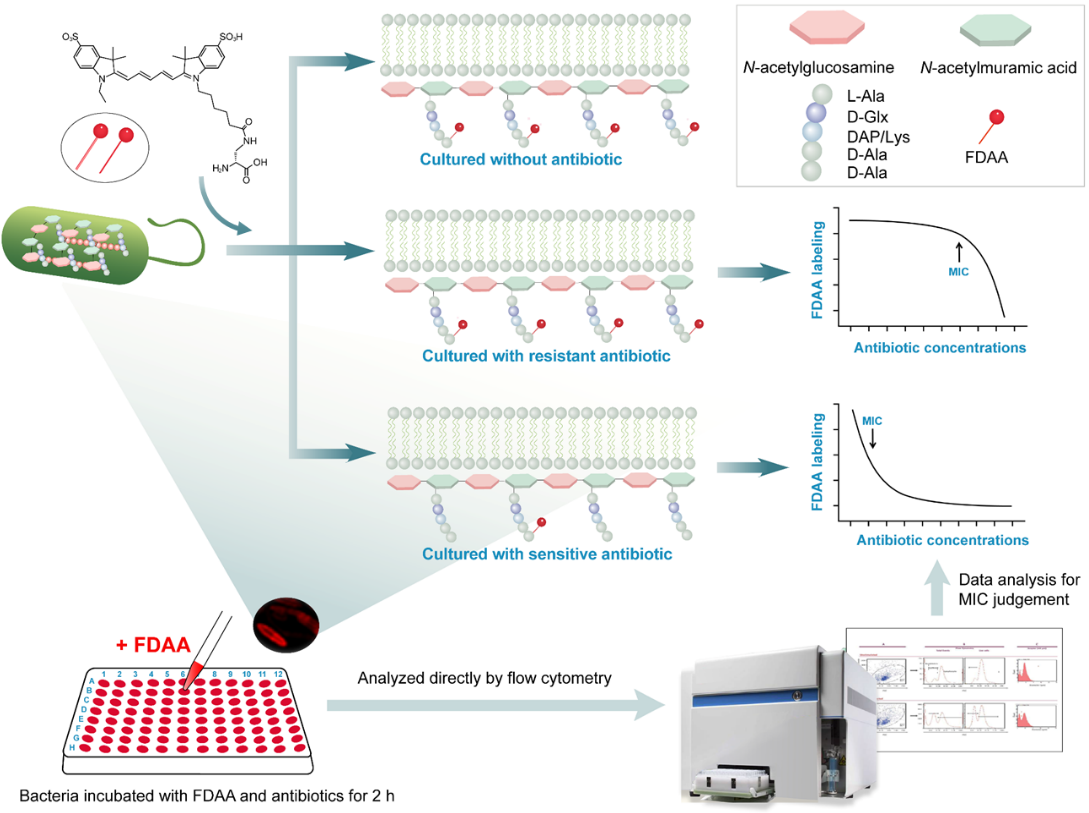Professor Yang
 Know more>>
Professor
Department of Chemical Biology, Xiamen University
Know more>>
Professor
Department of Chemical Biology, Xiamen University
Contact Information
Yang's LaboratoryRoom 532, Lujiaxi Building, College of Chemistry and Chemical Engineering, Xiamen University, Xiamen 361005, China
Ph: +86 (0) 592-218 7601cyyang@xmu.edu.cn
Juan Gao & Junnan Guo's paper has been accepted by Adv. Healthcare Mater.
2021-12-07 21:27:00

The threat of multidrug-resistant bacteria has escalated rapidly, increasing the demand for accurate antibiotic susceptibility tests (AST). Traditional bacterial growth yield-based ASTs often takes overnight to report, delaying the timely guidance of antibiotic use. Here, we report a fluorescent D-amino acid (FDAA) labeling-based AST (FaAST) that can quickly provide accurate minimum inhibitory concentrations (MICs). The FDAA-labeling signals that reflect the bacterial metabolic status, underlies the flow cytometry-based strategy for MIC determination. Resistant bacteria show a reluctant decline in FDAA-labeling (inhibited metabolism) after treatment with the corresponding antibiotics, whereas susceptible bacteria demonstrate quick responses to low doses of drugs. The MICs are determined based on the changing trends of labeling. After testing 23 clinical isolates and laboratory strains of the most critical drug-resistant bacteria against a panel of representative antibiotics, FaAST shows a high susceptibility category with an accuracy of 98.13%. Moreover, FaAST can also make quick and accurate diagnosis against bronchoalveolar lavage fluids collected from hospital-acquired pneumonia patients, saving 2–4 days in guiding antibiotic use for this life-threatening infection. Thus, the speed, accuracy, and broad applicability of FaAST will be valuable in informing antibiotic decisions when treating critical infections caused by drug-resistant bacteria.
